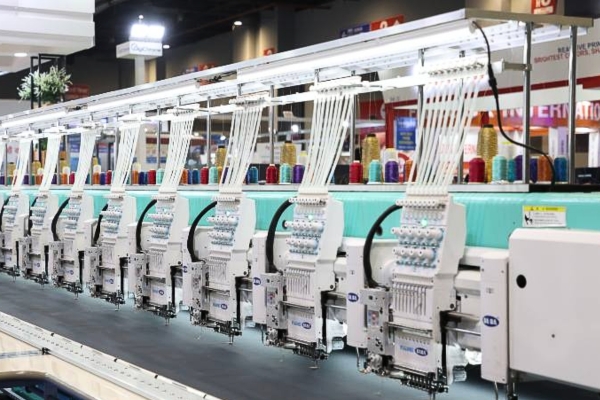What is the current position of textile industry?
The textile industry is a cornerstone of the global economy. It represents 2% of the world’s GDP and employs over 60 million individuals worldwide. This sector plays a pivotal role not only in international trade but also in societal development. The industry stands on the brink of transformation amid shifting economic landscapes driven by consumer demands and technological advancements. A growing emphasis on sustainability further propels this evolution.
Table of Contents
Economic Impact and Market Dynamics
1. Current Market Evaluation
In 2020, the global textile market was valued at $961 billion, with projections indicating-growth to $1.23 trillion by 2027, marking a compound annual growth rate (CAGR) of 4.2%. The global economy’s post-COVID-19 recovery fuels the anticipated growth. Additionally, an increasing inclination towards sustainable fashion contributes to this positive outlook.
2. Leading Regions and Key Players
Asia Pacific dominates the textile landscape, accounting for over 40% of the global market share, with China leading as the largest textile exporter. Following closely are Bangladesh, India, and Vietnam, each contributing significantly to the worldwide supply chain. Conversely, United States, Germany, and Japan rank as the top importers, driven by their robust consumer markets.
Technological Advancements and Sustainability

1. Innovations Transforming Production
Automation and digital printing have revolutionized the textile industry, enhancing production efficiency and reducing costs. Notably, the integration of sustainable materials like organic cotton and recycled polyester has gained momentum, reflecting the industry’s commitment to reducing its environmental footprint.
2. Shift Toward Sustainable Practices
The industry’s pivot towards sustainability is not just a trend but a necessity. Using eco-friendly materials and processes is increasingly becoming a benchmark for consumer preferences. With the global textile market expected to embrace a more sustainable trajectory, companies are investing in technologies that promise eco-efficiency and reduced resource consumption.
Environmental, Social, and Economic Challenges

1. Navigating Environmental Concerns
The textile industry is one of the largest water consumers responsible for chemical pollution. It is estimated to use about 79 billion cubic meters of water annually. Initiatives such as the Better Cotton Initiative and the Sustainable Apparel Coalition are critical in addressing these challenges and promoting responsible sourcing and manufacturing practices.
2. Social Responsibility and Labor Practices
Social accountability remains a pressing issue, focusing on fair labor practices throughout the supply chain. The demand for transparency and ethical conduct in production prompts companies to adopt measures. These measures ensure worker’s rights and safety, reflecting a growing commitment to responsible business practices.
Emerging Markets and Innovation Opportunities

1. Technical Textiles and Smart Fabrics
Emerging sectors such as technical textiles and intelligent fabrics represent the industry’s future. With the specialized textile market expected to reach $249 billion by 2025 and intelligent fabrics projected to hit $4.72 billion, the potential for innovation and market expansion is immense. These sectors highlight the industry’s shift towards materials and technologies that cater to specific, often sophisticated applications.
2. Digitalization and E-Commerce
The textile industry is undergoing a digital transformation. Manufacturers use digital media to market products such as wholesale towels, T-shirts, Jeans, knitting products, socks, and more directly. E-commerce platforms are expanding market access, transforming retail experiences, and shifting marketing strategies toward B2B models. This change enhances efficiency, optimizes operations, and encourages collaboration, signifying a significant shift in the textile industry.
3. The Path Forward: Challenges and Opportunities
The textile industry is at a crossroads, facing significant challenges and unprecedented opportunities. To thrive, companies must navigate the complexities of global supply chains, adapt to shifting consumer behaviors, and invest in sustainable practices. Embracing digitalization and technological innovation will be vital to unlocking growth and ensuring resilience.
Sustainability and ethical manufacturing will continue to define the competitive landscape. As consumers become more environmentally conscious, the demand for products that align with these values will only increase. Companies that can transparently demonstrate their commitment to sustainability and social responsibility will likely capture a larger market share.
4. The Future of Textiles in the Next Years
- The textile industry is expected to grow by 4% annually from 2021 to 2026.
- Advancements like 3D printing and smart textiles will boost industry growth.
- Automation and digitalization will make production more efficient and cost-effective.
- E-commerce and online shopping will change consumer behavior, focusing on convenience and personalized products.
- Health and wellness trends will increase demand for textiles with antimicrobial and UV protection properties.
- The fashion industry will drive textile innovation through collaborations between manufacturers and designers.
- Artificial intelligence and machine learning will enhance forecasting and production processes in textiles.
- Growing connectivity will increase demand for smart textiles with features like biometric monitoring.
- Natural and organic fibers like bamboo, hemp, and soy will be used more for sustainability.
- The impact of climate change will lead to textiles with properties like temperature regulation and water resistance.
Concussion
The textile industry’s future depends on adopting sustainable practices and using new technologies. Companies focusing on eco-friendly methods and innovation will likely succeed. Growth will be driven by consumer demand for green and technologically advanced products. E-commerce, intelligent textiles, and artificial intelligence are set to transform how textiles are made and sold. The industry will become more efficient and better able to meet global trends. The balance between economic growth and caring for the environment will shape its evolution.
